A step-by-step guide to caring for a lemon tree at home
Having a lemon culture home has many advantages. With the help of such a tree, tasty, healthy and aromatic fruits are grown independently.
The plant becomes a decoration of any room, delighting every guest.
Home care for a lemon tree is a simple and straightforward process if you follow the basic recommendations and take into account the optimal conditions.
Reasons for growing lemon at home
The pluses of breeding lemon culture include:
- annual receipt of healthy, tasty and aromatic fruits;
- a great decoration for any room;
- with proper care, the height of the tree reaches 1.5 m;
- in one season, people receive up to 150 fruits.
During the flowering period, beautiful, bright flowers appear. The lemon tree is striking with its evergreen and fluffy crown.
The nuances of growing
At home, it will not be difficult to competently take care of this plant... But the main nuances of the process include:
- a spacious area in the room is being prepared;
- a lot of sunlight should fall on the plant;
- the plant requires regular ventilation;
- optimal drainage is provided;
- high-quality feeding is made;
- in winter, the tree is kept cool;
- several years pass from the moment of planting to the receipt of lemons;
- with proper care, the tree pleases its owners with longevity, incredibly pleasant aroma and healthy fruits.
Over time, the plant grows stronger and begins to bloom. Only after that do the first lemons appear, which are not large in size. But every year the harvest becomes more generous.
Favorable conditions for landing
You can grow a lemon tree from a seed or seedling. In the first case, there is a high probability that the stone will not be accepted, therefore it is advisable to acquire a strong seedling. Seedlings are selected from a tree grown in the Russian climate.
If the plant is brought from the Caucasus, then it can only be grown in a cool room, so a greenhouse or winter garden is suitable. At home, such a plant dies quickly.
Landing rules include:
- the root collar is deepened by 5 mm, otherwise it quickly decays;
- after planting, the seedling is sprayed with a weak solution of potassium permanganate;
- although the pot should be located in a well-lit place, direct rays of the sun should not fall on it, therefore, if necessary, an artificial shade is created;
- it is impossible to constantly rearrange the tree from one place to another, therefore it is advisable to correctly choose a growing area where the plant will develop;
- planting is carried out in early spring;
- in winter, air humidity in apartments and houses decreases due to the heating season, so the plant is moved away from the battery, and is also periodically sprayed;
- in the summer, a cool shower is done every 7 days, and all the leaves are wiped with a damp cloth.
Attention! The lemon tree needs adequate air humidity, so if the apartment is too dry, this negatively affects flowering and fruiting.
Temperature
For the development of a plant, the temperature is considered optimal within +17 degrees. During the period of fruit development, the temperature rises to 22 degrees.In summer, with significant warming, the flowers and ovaries fall off, and with sharp temperature changes in the autumn and winter, leaves fall. Therefore, artificial optimal conditions are created for the tree.
The temperature of the soil should be the same as that of the air, and it is also forbidden to transfer the plant to a heated room from the open air with a significant difference in temperature or humidity.
Lighting
Lemon trees need soft and high-quality lighting. In summer, it has to be protected from direct rays, which lead to burns. In winter, there is an acute shortage of light, so fluorescent lamps are purchased, under which the plant is located for at least 5 hours a day.
If the tree is in the shade for too long, it will slow down development, as well as a significant decrease in leaves.
Pot selection
The pot intended for planting a plant is selected taking into account the size and age of the tree. The young tree is grown in a small plastic container. The transplant is carried out in pots that are 2 cm wider in diameter than the previous container.
A mature tree is planted in large flowerpots. But it is not recommended to choose containers that are too deep, as the root system rots in them and the soil sours.
Priming
Planting a lemon tree requires neutral and sterilized soil. It should be saturated with numerous nutrients. It is recommended that you choose a universal soil specifically designed for citrus fruits. It can be replaced with homemade soil. For this, 2 parts of garden land are used, 1 part of sifted sod, to which a little wood ash or lime is added, 1 part of sand and 1 part of peat.
The sand is easily replaced with artificial substrates such as vermiculite or perlite.
Expanded clay is ideal for creating drainage. In a properly prepared soil, the tree grows for several years, therefore only high-quality components are selected.
Care rules
To get a strong plant that gives a large annual yield, it is provided optimal care... It consists in proper lighting, feeding, watering and moisturizing. Even the slightest mistakes cause a deterioration in appearance and a decrease in yield.
Watering and spraying
The durability of the plant depends on the correct watering. If a lemon tree is bought by an inexperienced gardener, then it literally dies within a few weeks. The main reason is illiterate watering. Therefore, in order for the plant to be healthy and strong, the rules are taken into account:
- the plant is watered only with settled water once a day;
- it is allowed to water the tree every 2 days, but with mandatory monitoring of the state of the soil;
- in winter, watering is carried out 2 times a week;
- the accumulating water in the pan is immediately drained, otherwise the root system will quickly rot;
- daily leaves are sprayed with settled and warm water;
- it is allowed to increase the amount of spraying in the winter if the air in the apartment becomes too dry due to the operation of the heating.
Beginners must find a balance between overflow and lack of water. If the plant does not receive enough moisture, the leaves turn yellow. With excessive watering, the decay process begins.
Attention! If yellow leaves are found, then it is advisable to abundantly spray the tree with a weak solution of potassium permanganate.
In the summer, it is important to use a warm shower, but it is required no more than 1 time per month.
Top dressing
Citrus fruits are plants that are overly sensitive to fertilization. Therefore, the preparations are regularly changed, since when using only one top dressing, the acidity of the soil changes. This leads to a deterioration in yields, the appearance of diseases or slow development.
When choosing fertilizers, recommendations are taken into account:
- exclusively mineral compositions are used;
- top dressing is applied from March to October;
- it is advisable to use fertilizers every 2 or 3 weeks;
- for young trees, feeding is required once every 1.5 months;
- in the summer, top dressing is combined with watering;
- in the spring and autumn, fertilizers are used after watering;
- in winter, it is allowed to make fertilizing only once.
The most suitable is an infusion made from birch leaves and quinoa.
Pruning
It is required to improve the appearance of the lemon tree. If the tree is small in size and is grown only for decorative purposes, then it does not need spreading and large branches. Therefore, they are completely trimmed, which allows for a compact crown.
For trees that yield crops, it is required to balance the number of branches and shoots. Therefore, instead of standard pruning, pinching is carried out. It is carried out for plants older than one year. For this, the main shoot is pre-cut, and about 30 cm in length is left. Pinching is done after the tree gets stronger and new branches appear.
Reproduction
Propagation of a lemon tree by cuttings or seeds is allowed. If a seed is planted, then you can enjoy the first fruits only after 8 years. For cuttings, this period is reduced to 4 years.
Care rules depending on the period
The tree needs specific care, taking into account the period, which can be represented by flowering, dormancy or fruiting:
- Bloom. At this time, the tops of the shoots become purple. Large flowers appear in spring after the first bud appears. The flowering period lasts about two months. Only after the petals have fallen off does the fruit set. Throughout the year, one tree may have small fruits, ovaries, buds and flowers. You do not need to pluck the inflorescences, as they become ovaries. During flowering, standard care is provided. The plant is protected from drafts, and is also regularly sprayed. There should be about 10 leaves per inflorescence. The rest of the ovaries are removed, otherwise a lot of small and tasteless fruits will be obtained.
- Fruiting. The fruit ripens after setting for 200 days. During this period, the plant needs nutrition and good watering. The number of fruits usually does not exceed 8 pieces. During this period, no specific care is required, therefore, it is enough only to remove the fruits in a timely manner.
- Peace. It falls on the winter period. It is necessary to create optimal conditions so that, during active growth, the tree fully blooms and bears fruit. Therefore, the plant is kept at a cool temperature. Flowers and shoots are removed before the dormant period. The temperature ranges from 12 to 17 degrees. Minimal watering is required, but the soil does not dry out. Spraying is carried out several times a week.
With proper care in every period of time, the rapid development of the lemon tree is ensured.
Care at different times of the year
In the spring, the tree wakes up, so active growth begins. At this time, he needs a lot of sunny color, so it is advisable to use lamps. In warm weather, you can take it outside. The room in which the tree is located must be ventilated, since air flow is required.
In the summer, it is advisable to expose the plant to the street or even to dig it in the country.
In the fall, the tree returns home, and it must be carefully examined, since when pests or diseases are found, appropriate preparations are used. A warm shower is arranged, and the leaves are washed well.
Before wintering, watering gradually decreases and the amount of applied fertilizers decreases. In winter, a dormant period sets in, so a cool temperature is maintained, and watering is also reduced.
Transfer
The tree is grown only in a properly selected pot, so as it grows, transplanting into a larger container is required.
Attention! Too large a pot will cause root rot.
The container size increases gradually, for which the growth of roots is taken into account. The transplant is carried out in a standard way, for which an earthen lump is pulled out of the pot, transferred to a prepared container. After that, the citrus culture is exhibited in its original place. A change of environment negatively affects development.
What to do if the plant dries
The lemon tree usually dries up with improperly selected soil or over-watering, as this leads to root rot. When transplanting, the rules of a gradual increase in the size of the container must be taken into account, otherwise the soil will quickly turn sour.
Sometimes the plant dries up when exposed to pests that are located on the trunk or in the roots. Frequent movement of the pot from one place to another has a detrimental effect. If the tree is watered too rarely, then it simply dries up from lack of moisture.
To combat drying, the reason is determined, after which pest control drugs are used, a special fertilizing for citrus fruits is introduced, or the plant returns to its original place.
What to do if the leaves have fallen
The reason for the dropping of leaves is poor lighting. The lemon tree is depleted, so it cannot provide all the necessary nutrients to the existing leaves.
Therefore, if the leaves begin to fall, then the pot is immediately exposed on the windowsill from the south side so that the plant can receive a lot of light. In cloudy weather, artificial lighting is provided.
Why are there no fruits
Lemon trees can bloom profusely, but the ovaries fall off without fruit. There are various reasons for this:
- no cross-pollination, which you have to do on your own using a cotton wool disk or a regular brush;
- the impact of pests, since even the slightest infection leads to a slowdown in growth and the absence of fruits;
- the plant blooms even in winter, therefore, due to the lack of dormancy, the strength for fruiting is not restored;
- abundant flowering, which becomes an obstacle to the appearance of fruits, therefore, it is necessary to get rid of numerous flowers on your own;
- lack of feeding.
After determining the exact cause, it becomes possible to cope with the lack of fruiting.
Protection against diseases and pests
Usually, diseases appear only in the absence of proper care. For example, if a plant lacks lighting or nutritional components, then its leaves brighten. In the absence of the required amount of moisture, foliage falls. Dry air is accompanied by the cessation of flowering and darkening of the leaves.
The following parasites are found among pests:
- scabbards are removed with a toothbrush and soapy water, and they cause the leaves and branches to dry out;
- a spider mite is located on the seamy side of the leaves, gradually enveloping the entire tree with its cobweb;
- mealybug is detected by sticky secretions left on greenery, and it causes leaves and fruits to fall off;
- citrus aphids destroy the leaves.
Attention! The sooner the pests are identified, the higher the likelihood that they will not be able to cause irreparable harm to the lemon tree.
Conclusion
The lemon tree is a beautiful plant that can produce delicious and healthy fruits every year. But it needs high-quality and sophisticated care. Even minor mistakes cause the appearance of diseases, lack of fruit or poor-quality flowering. Therefore, proper watering, regular spraying, good feeding and timely transplantation are required.
Watch the related video:



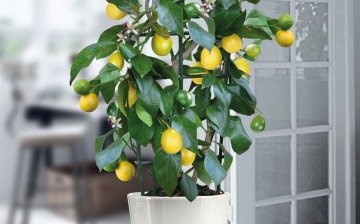
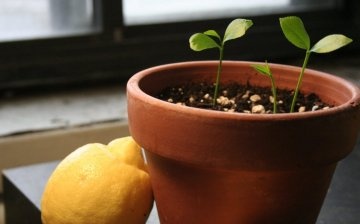
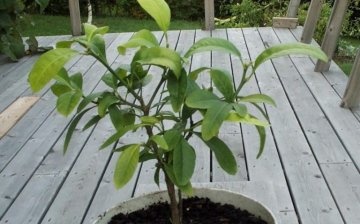



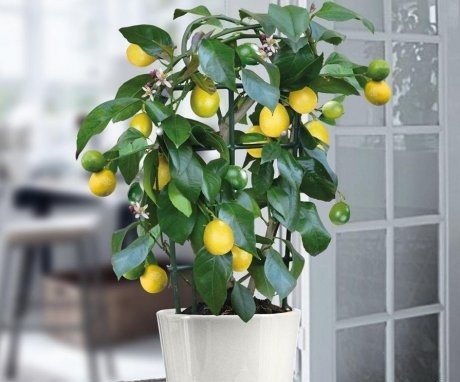
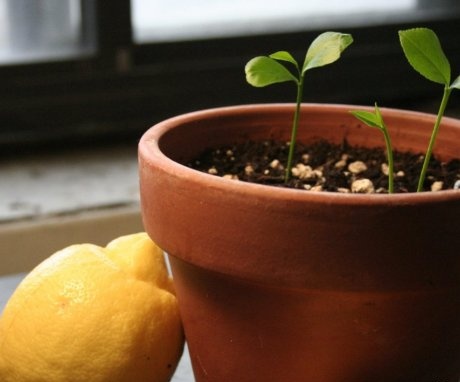
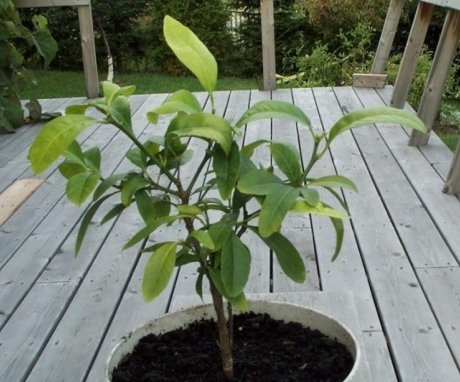
Lemon loves moisture in the air, and in our apartments with central heating, on the contrary, it is dry in winter.In addition, in order for the lemon to bear fruit, you need to buy a cultivated tree. A lemon will grow from the seeds, but it will definitely not bear fruit.
No matter how much the lemon tree has grown, I have never had any fruit. Now I understand why. I didn't know that it needed to be pollinated. But the tree itself was very beautiful and strong. Over time, it has obviously aged and dried up. Somehow I didn't even have time to separate the cuttings.
I have the same problem. The lemon has been growing for three years, it has already been thinking about the fruits. Forgot the school topic about pistils and stamens. It happens. But now they have finally appeared, albeit small, but still edible. Tea is fine.
Several times I tried to grow this tree on a windowsill from seeds that took out ripe fruits. In principle, everything worked out, in a few years a rather powerful plant grew, but it was never possible to achieve flowering.